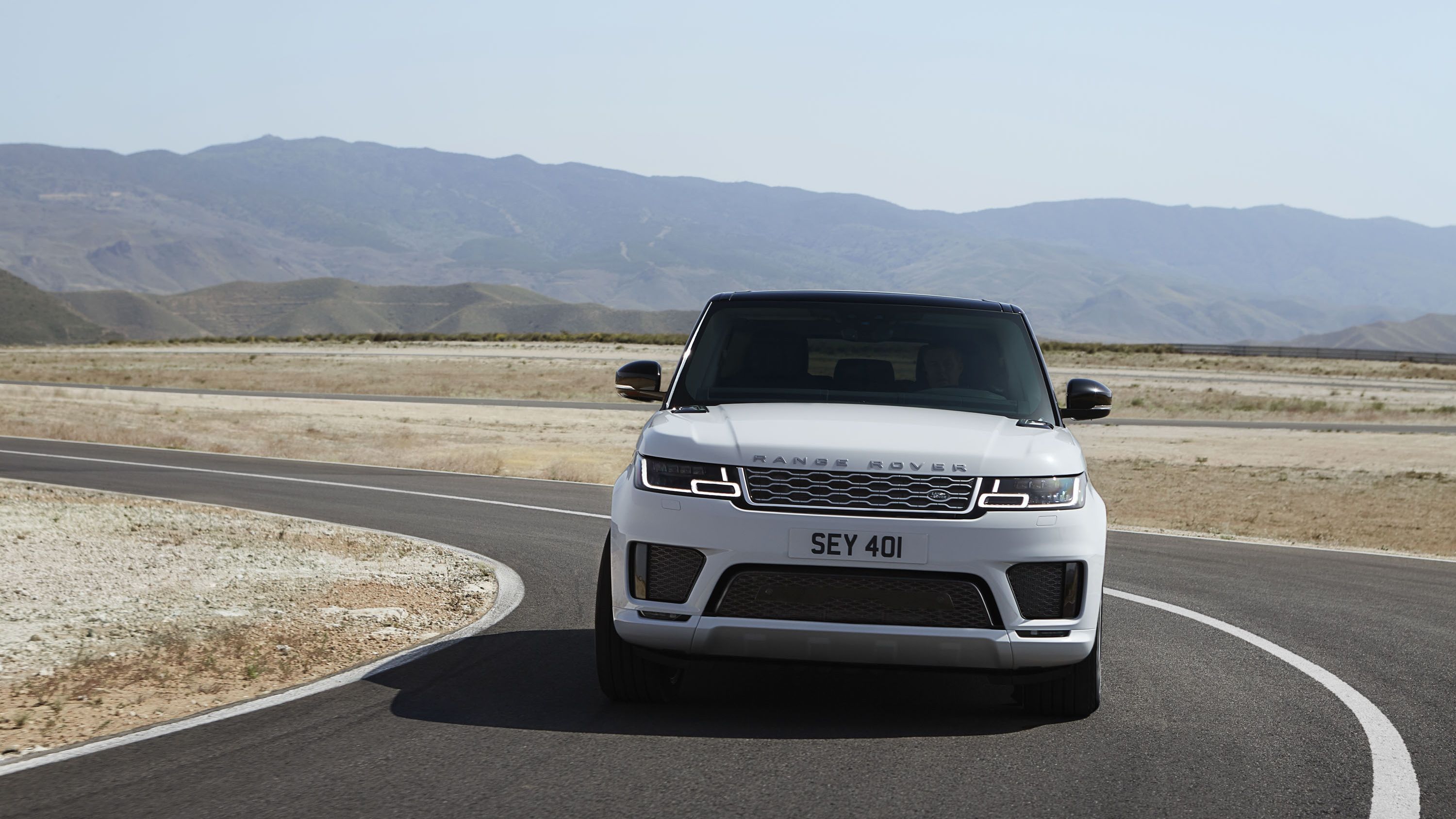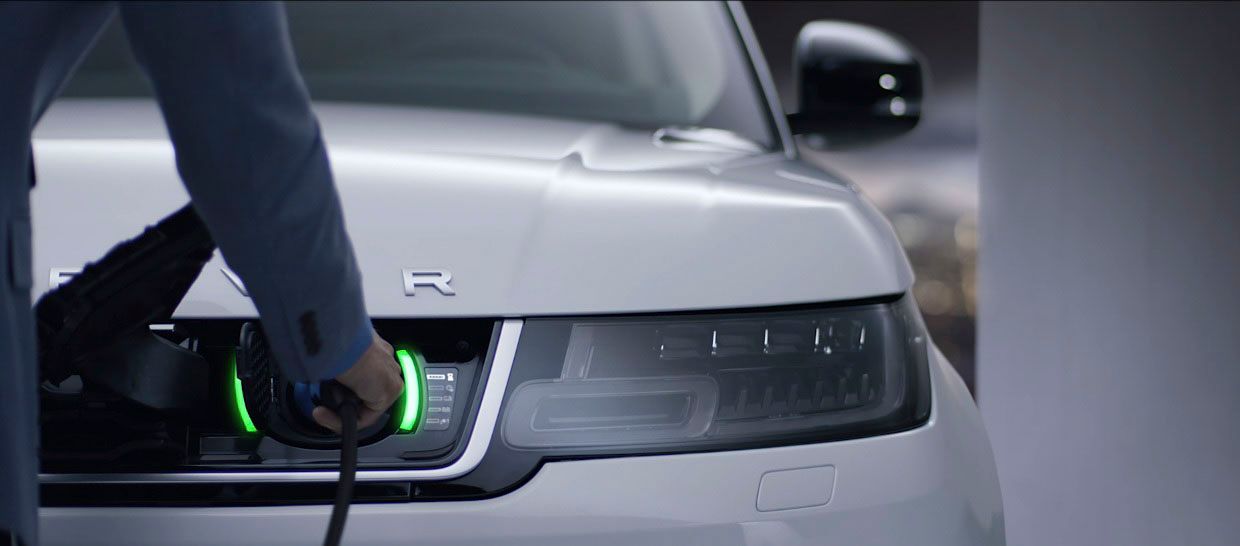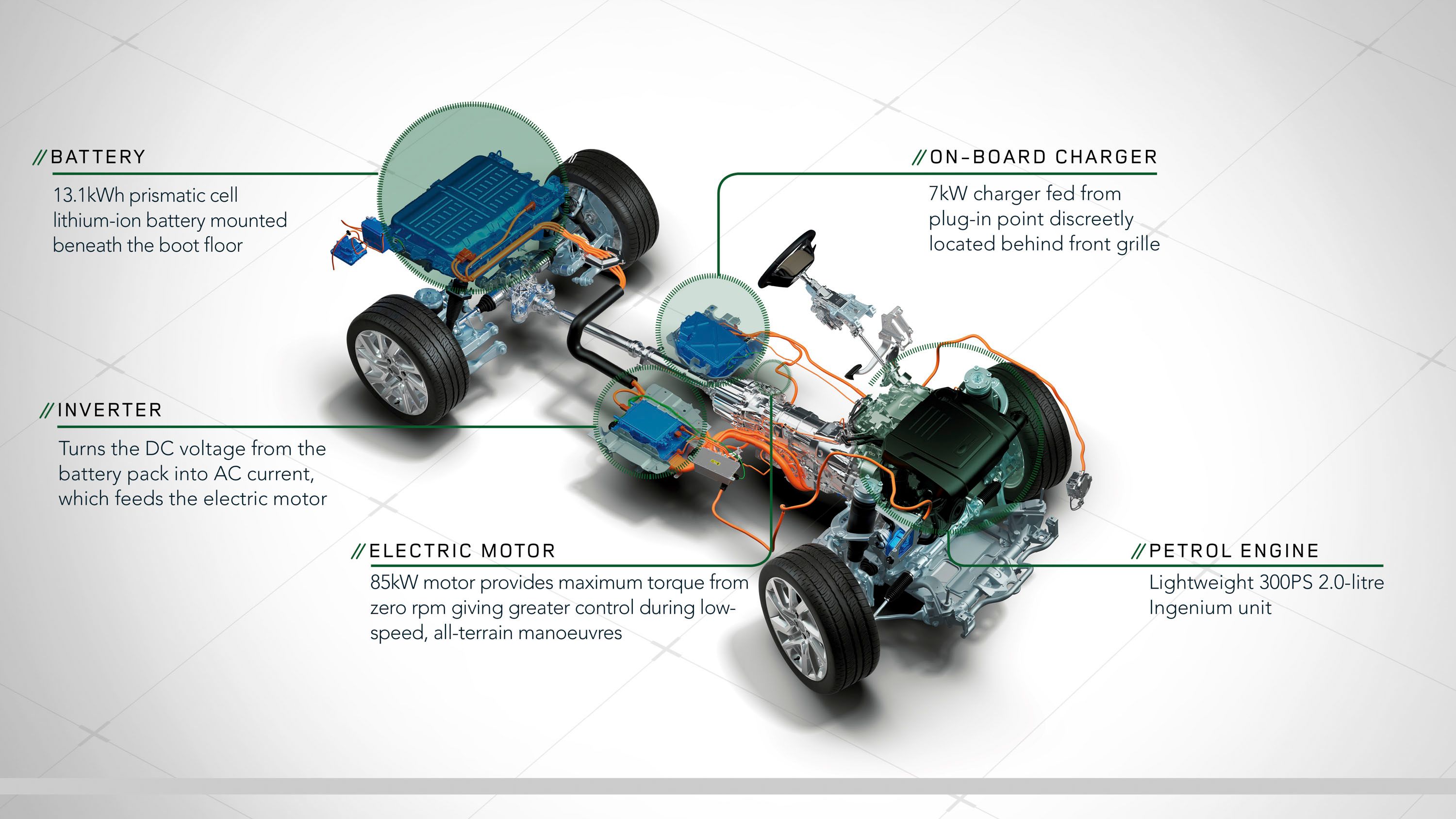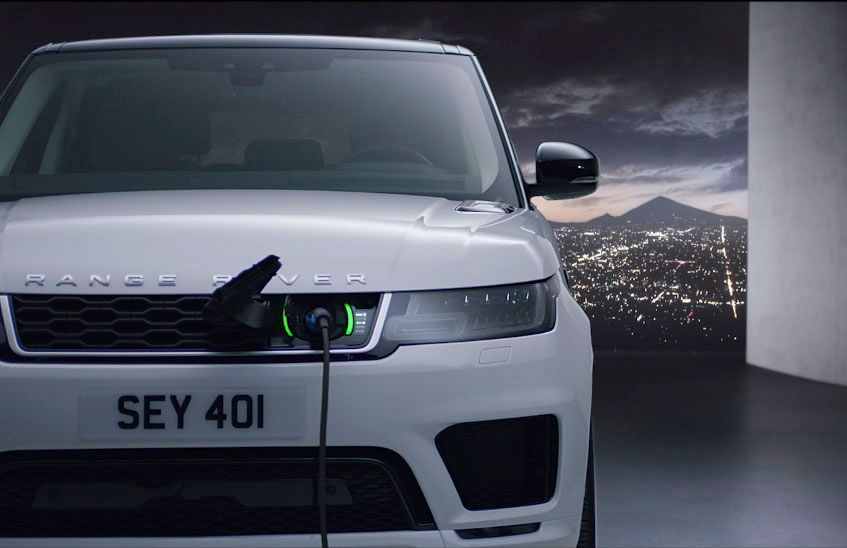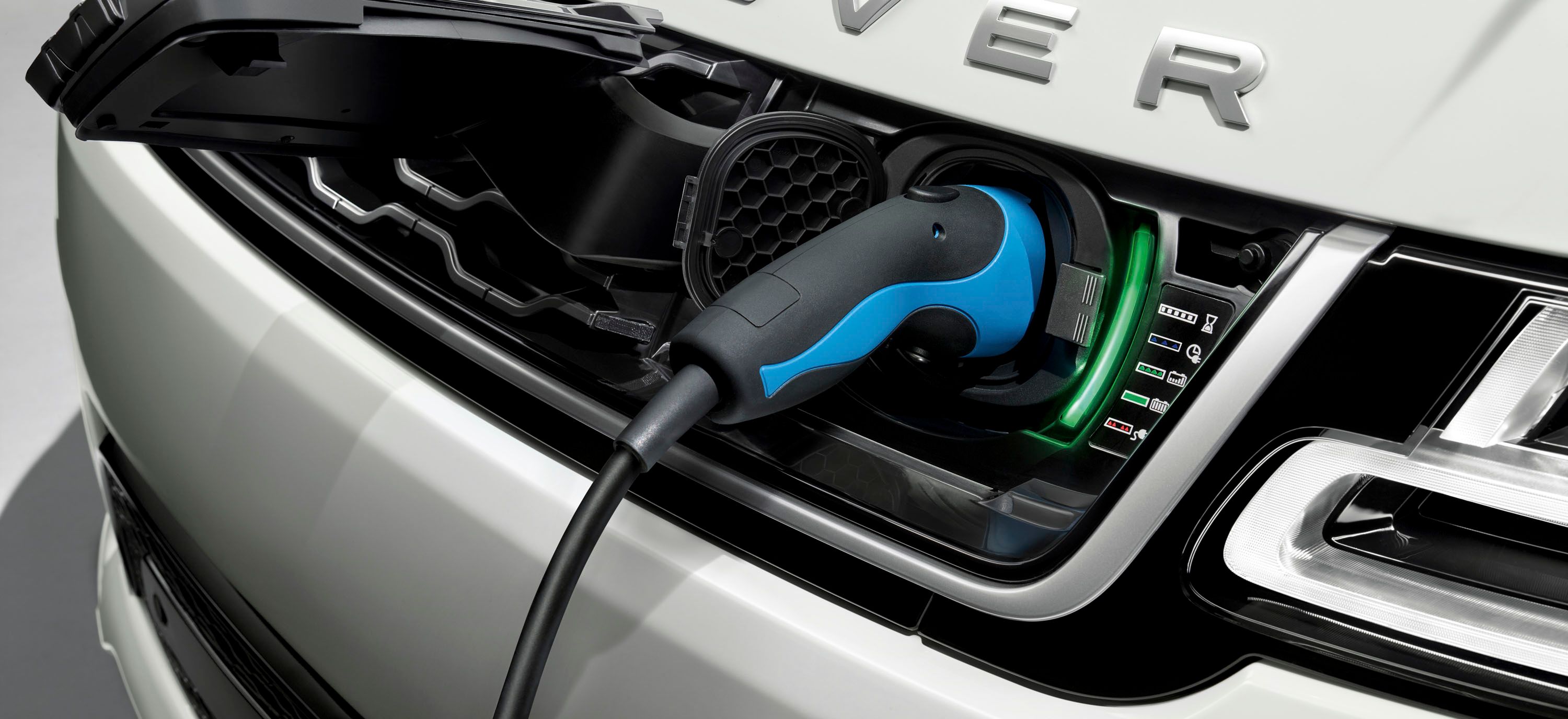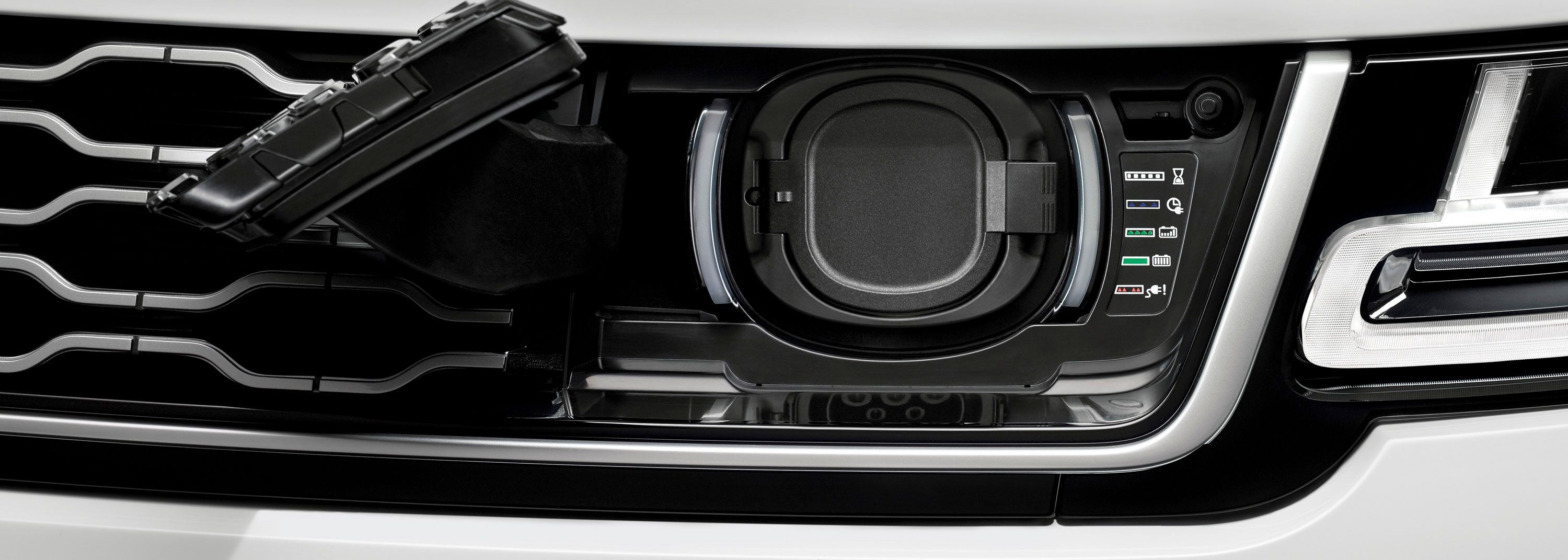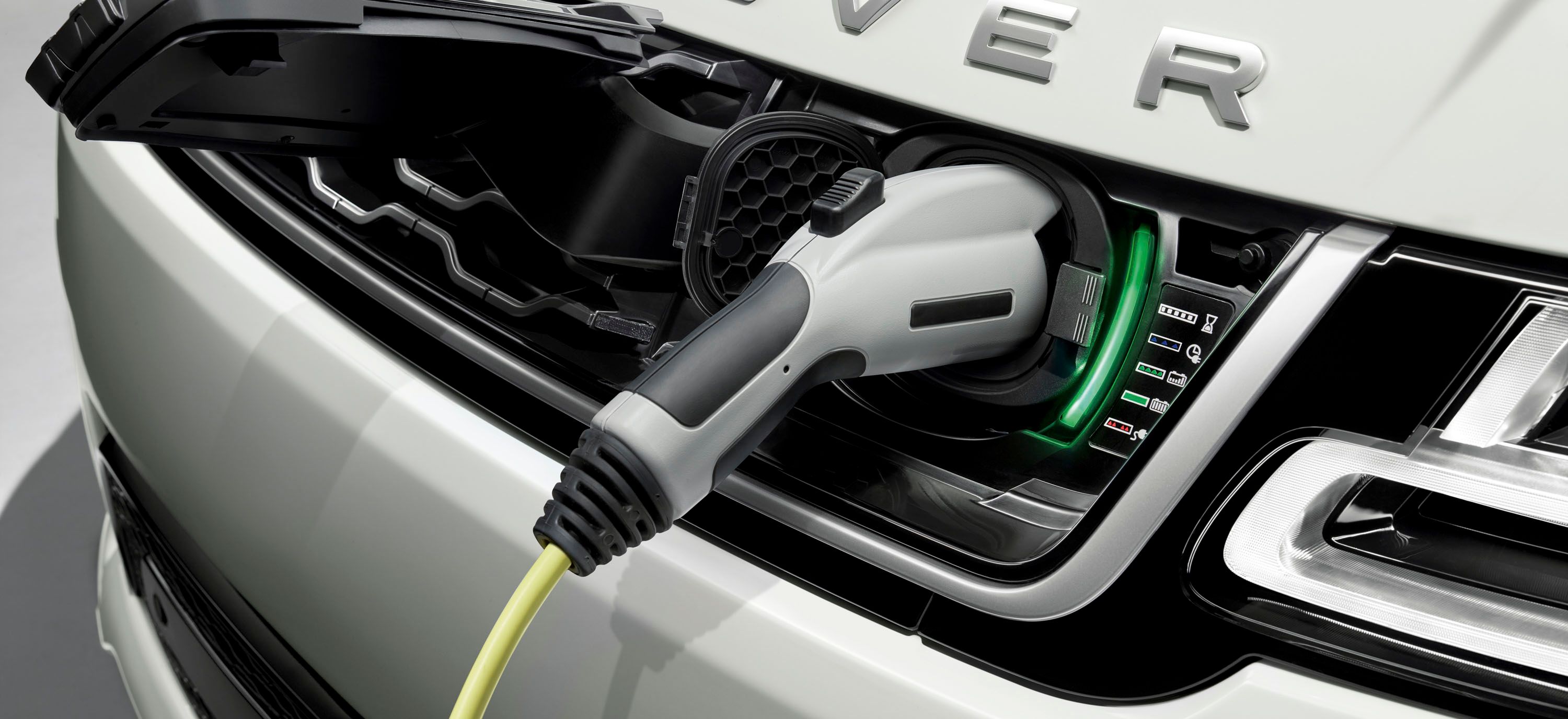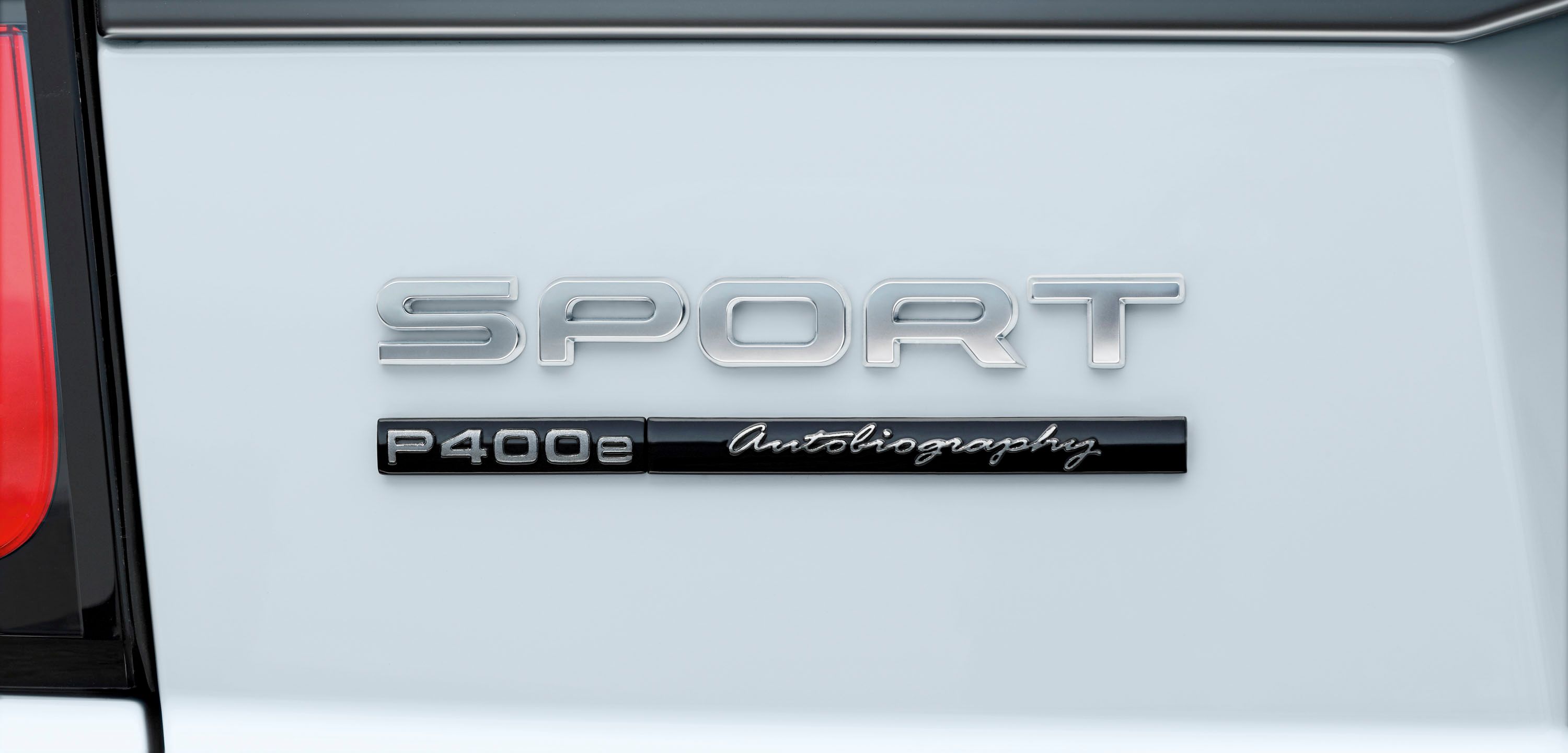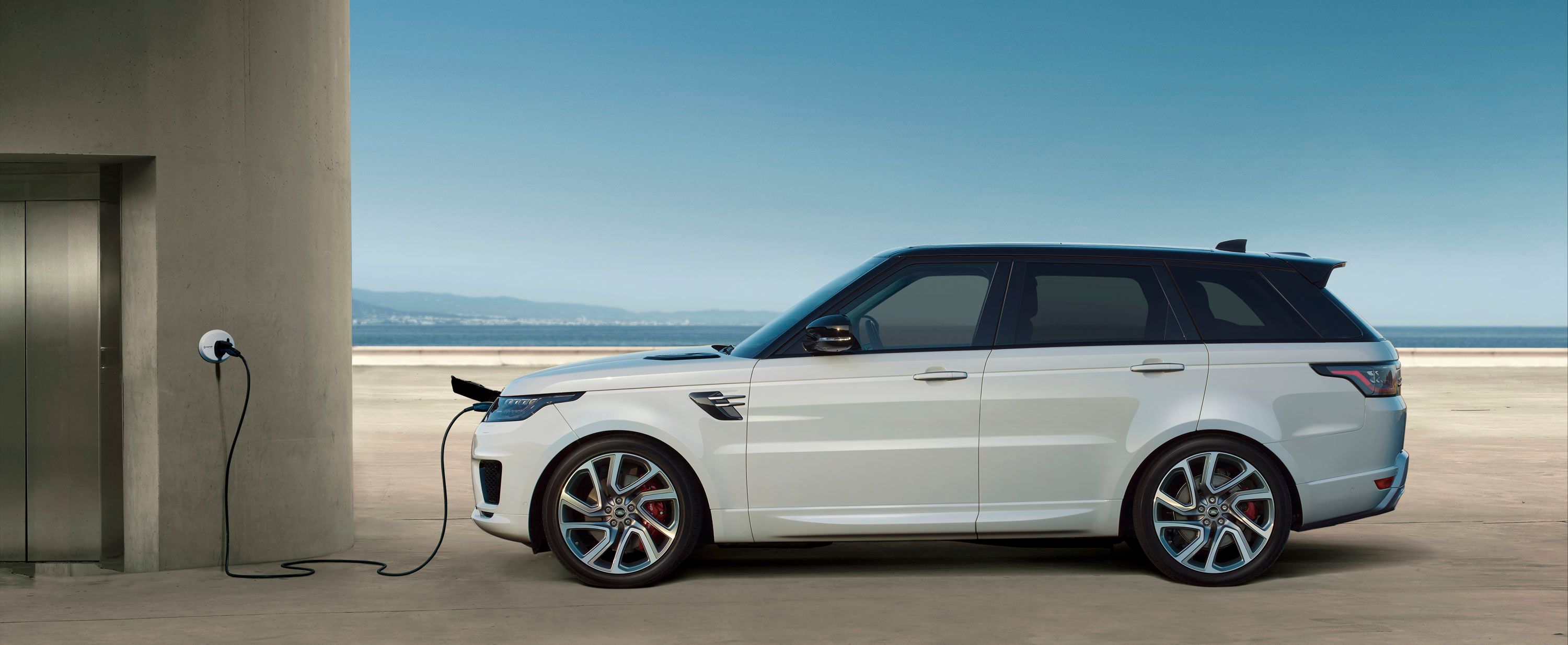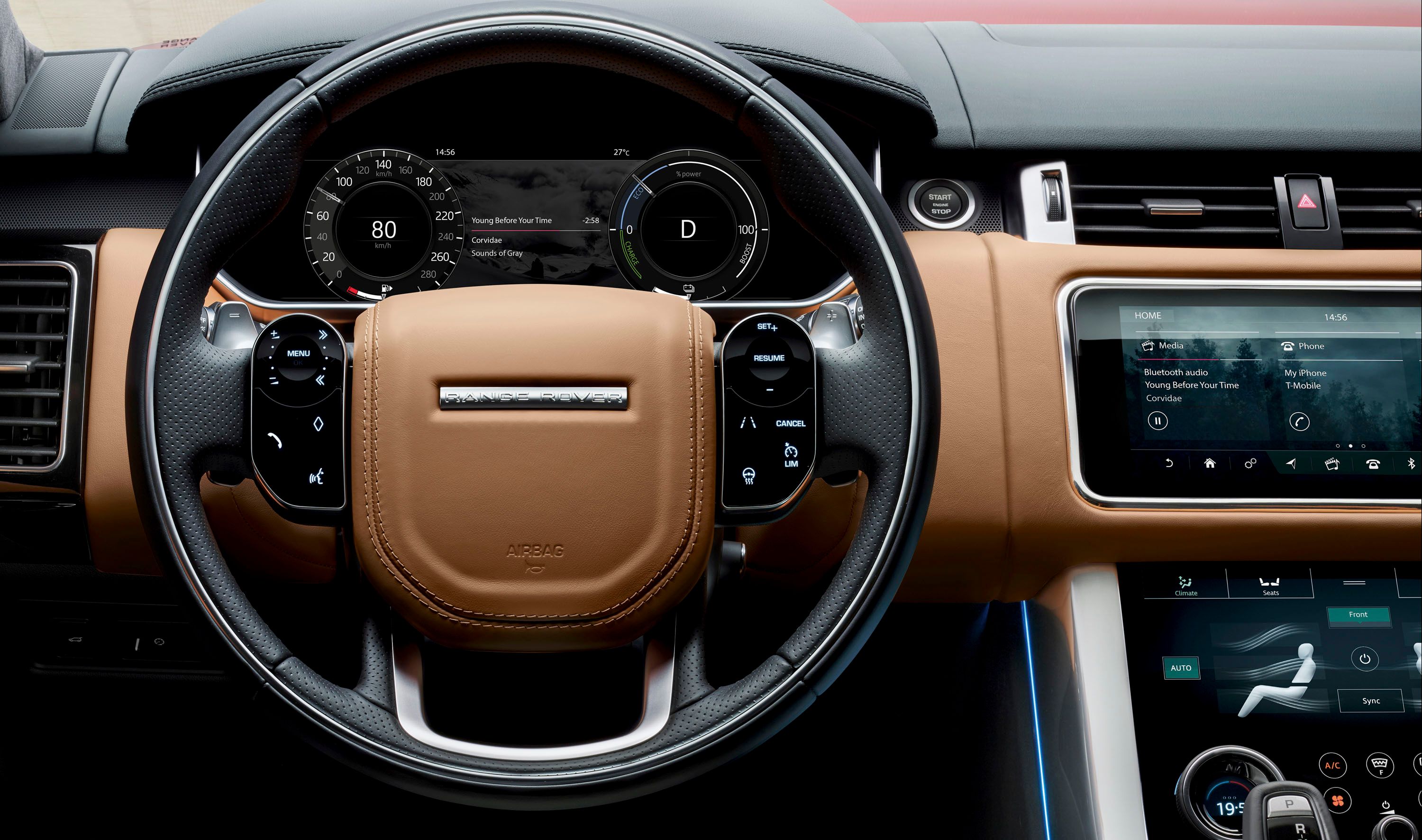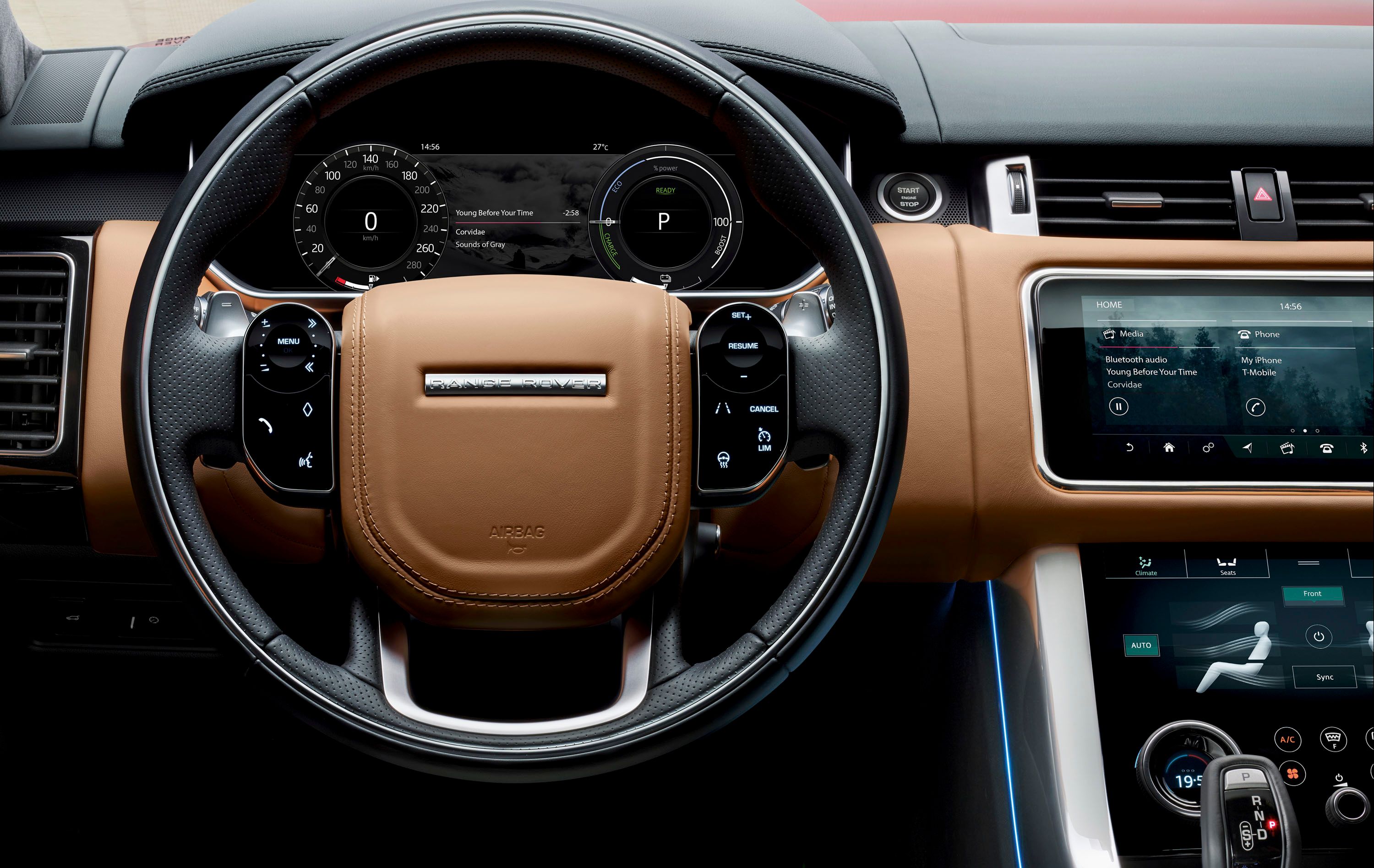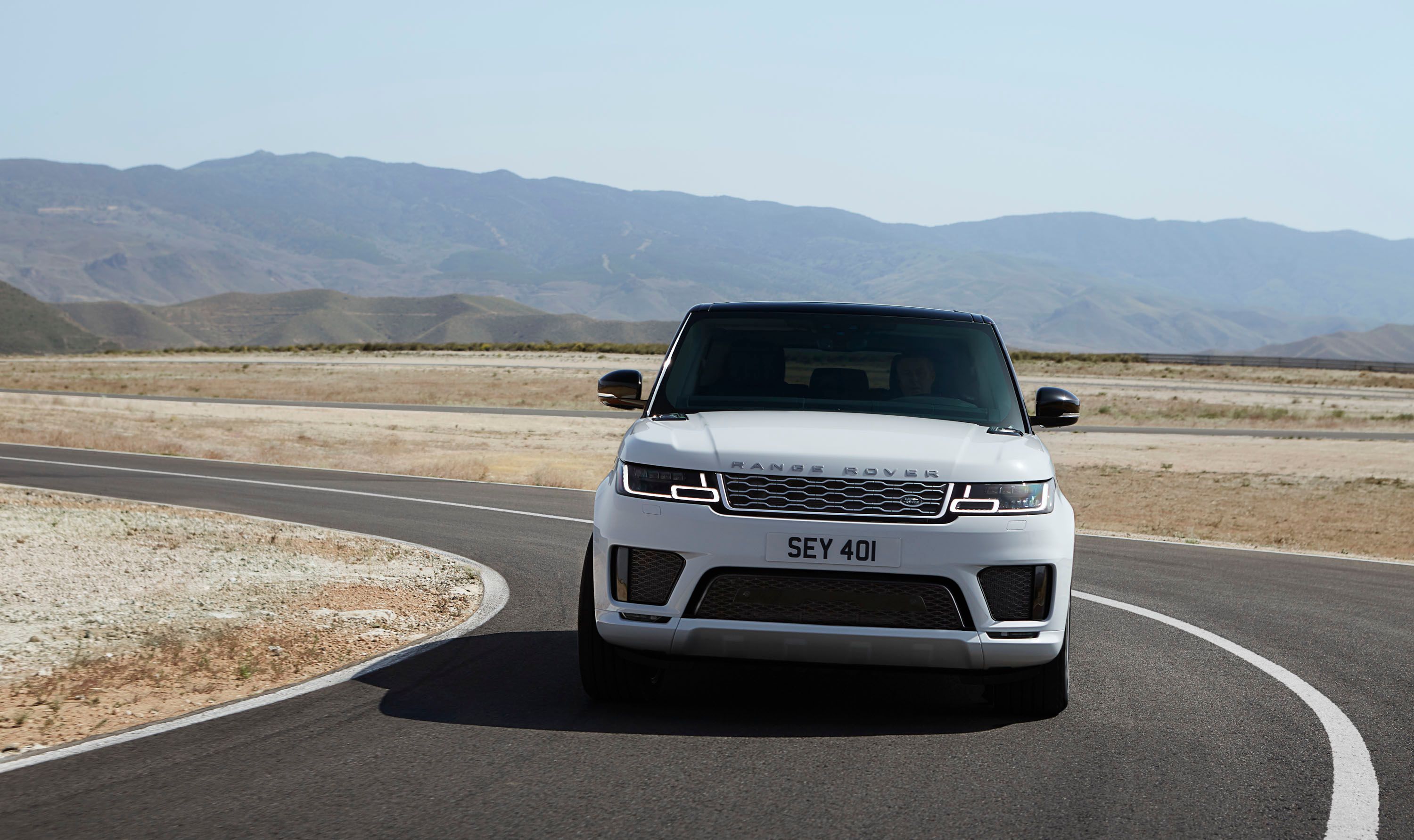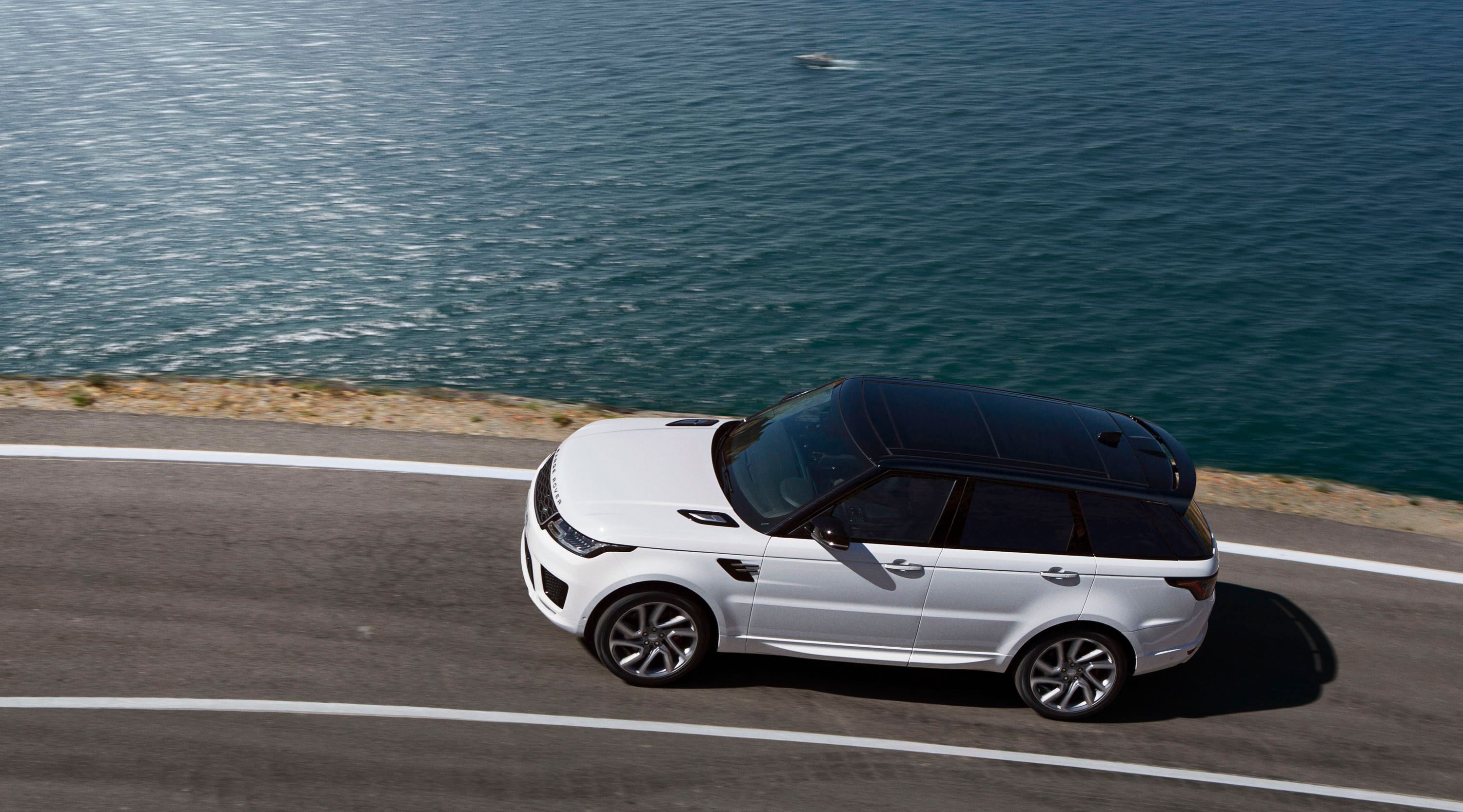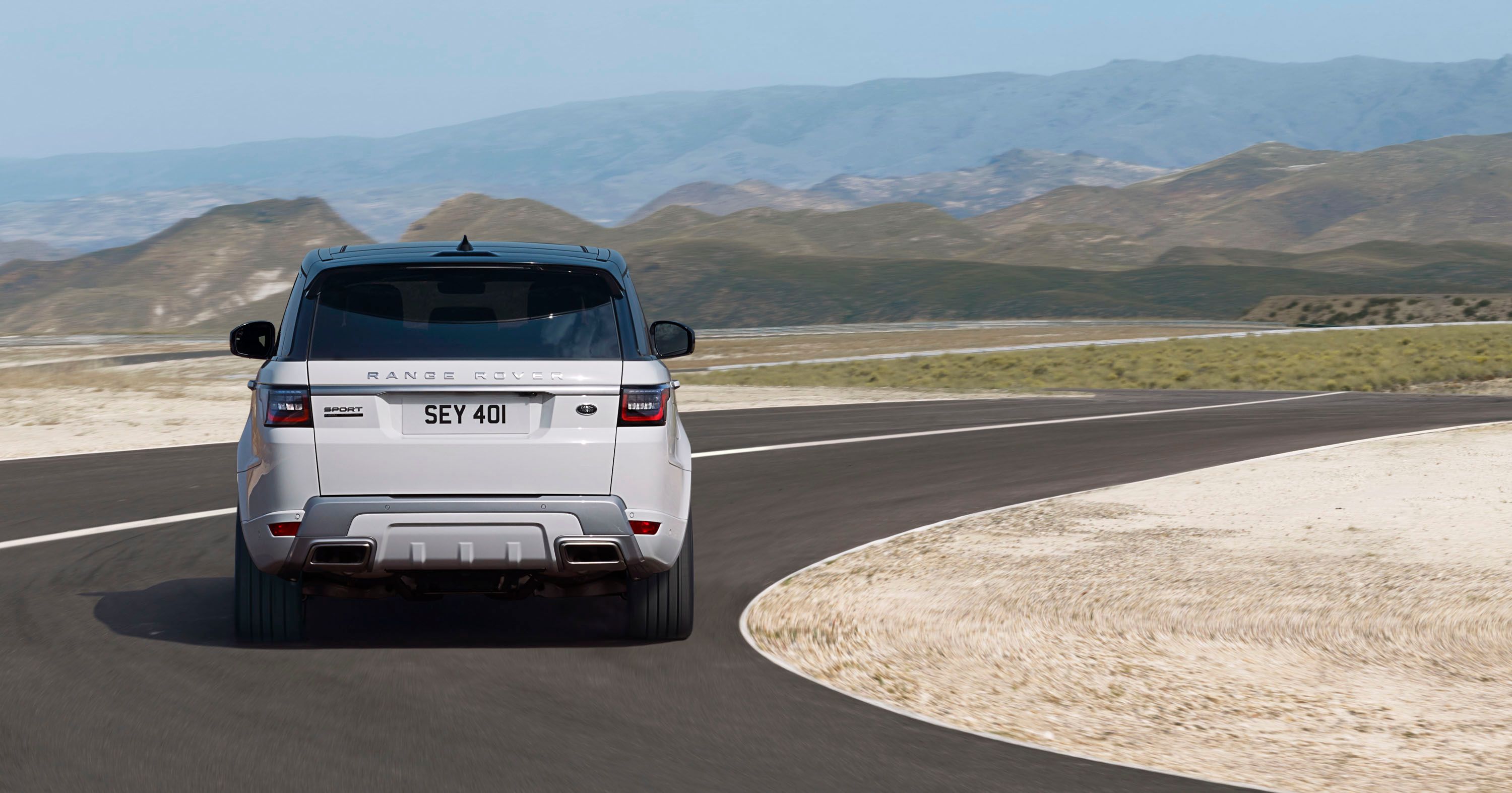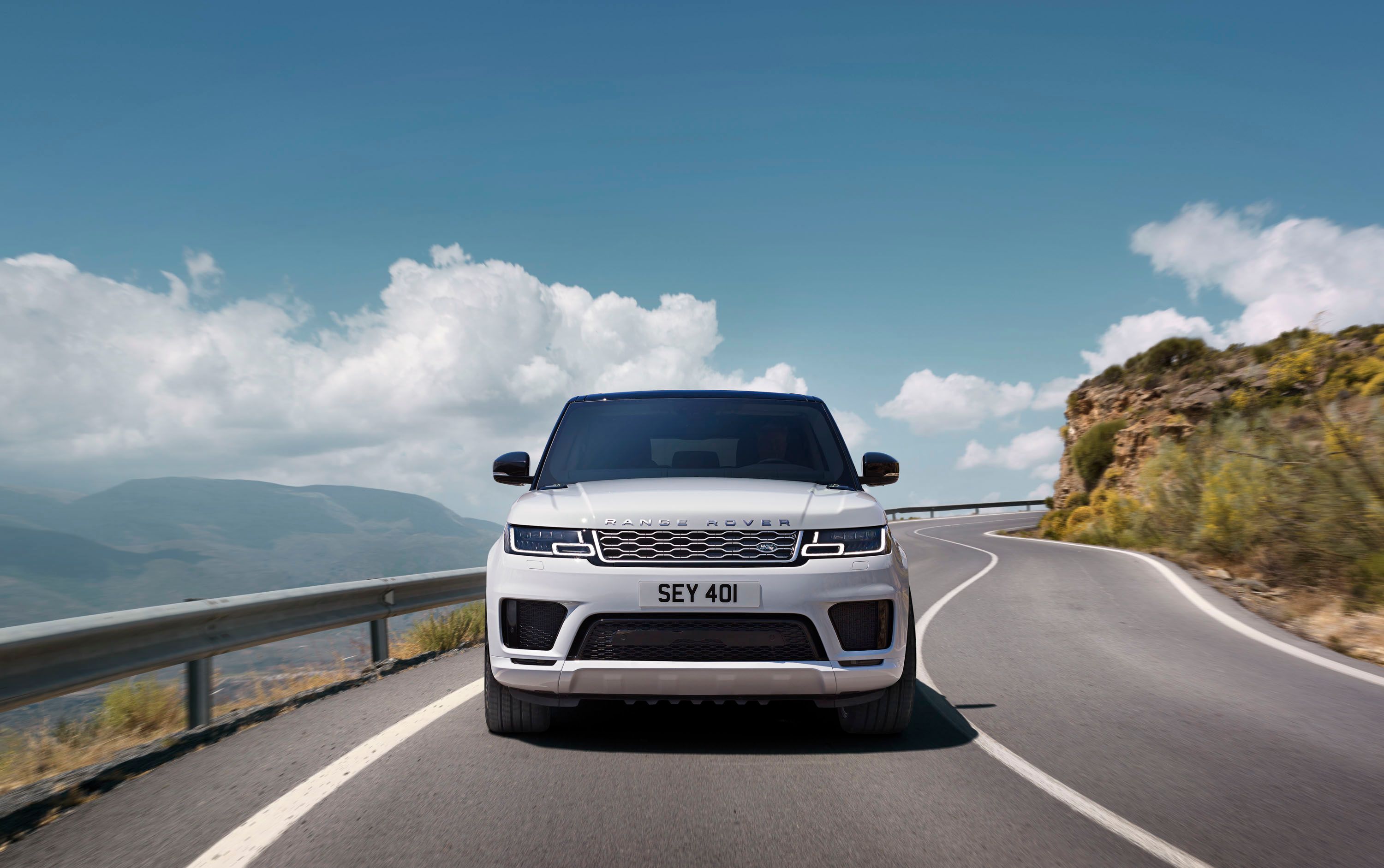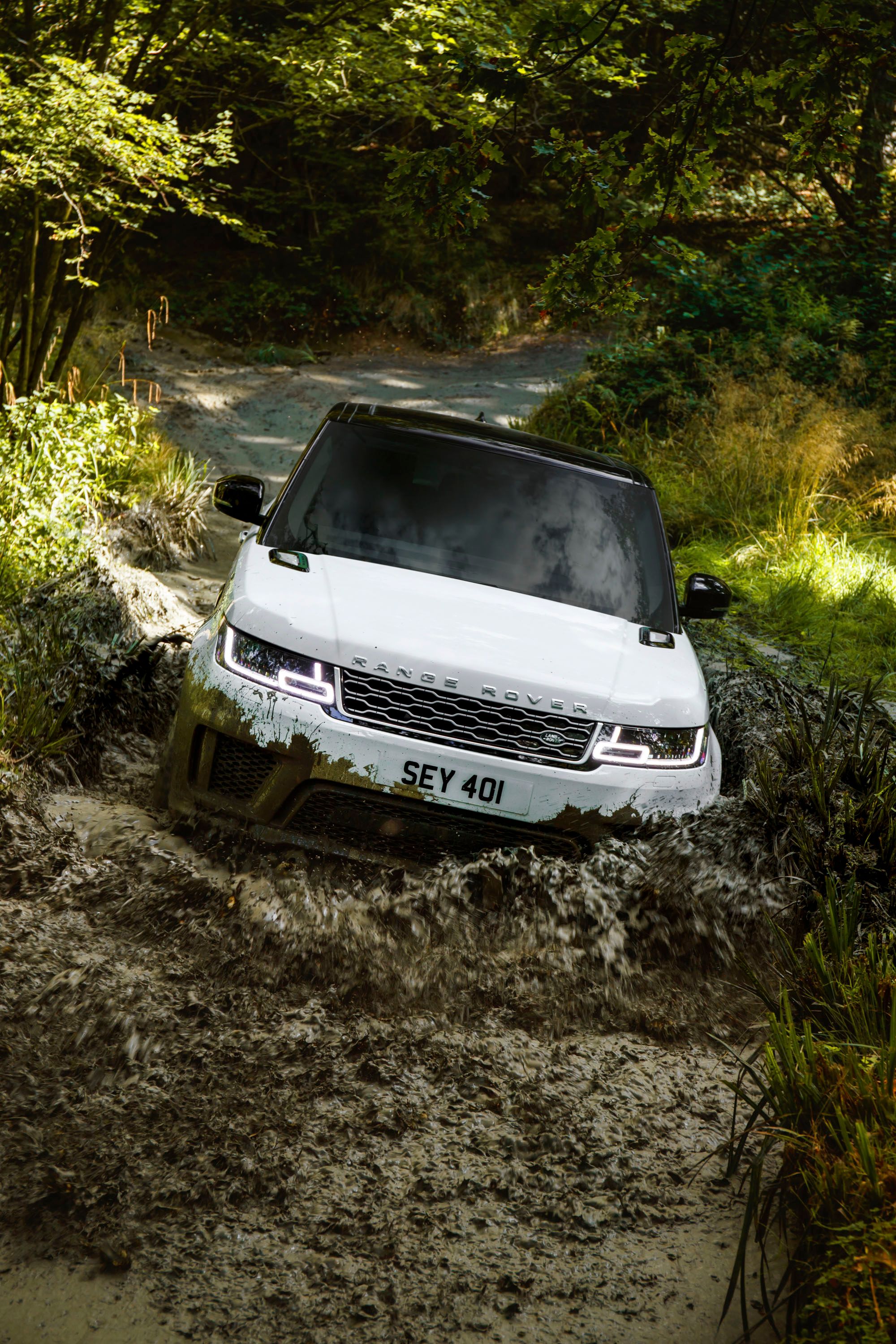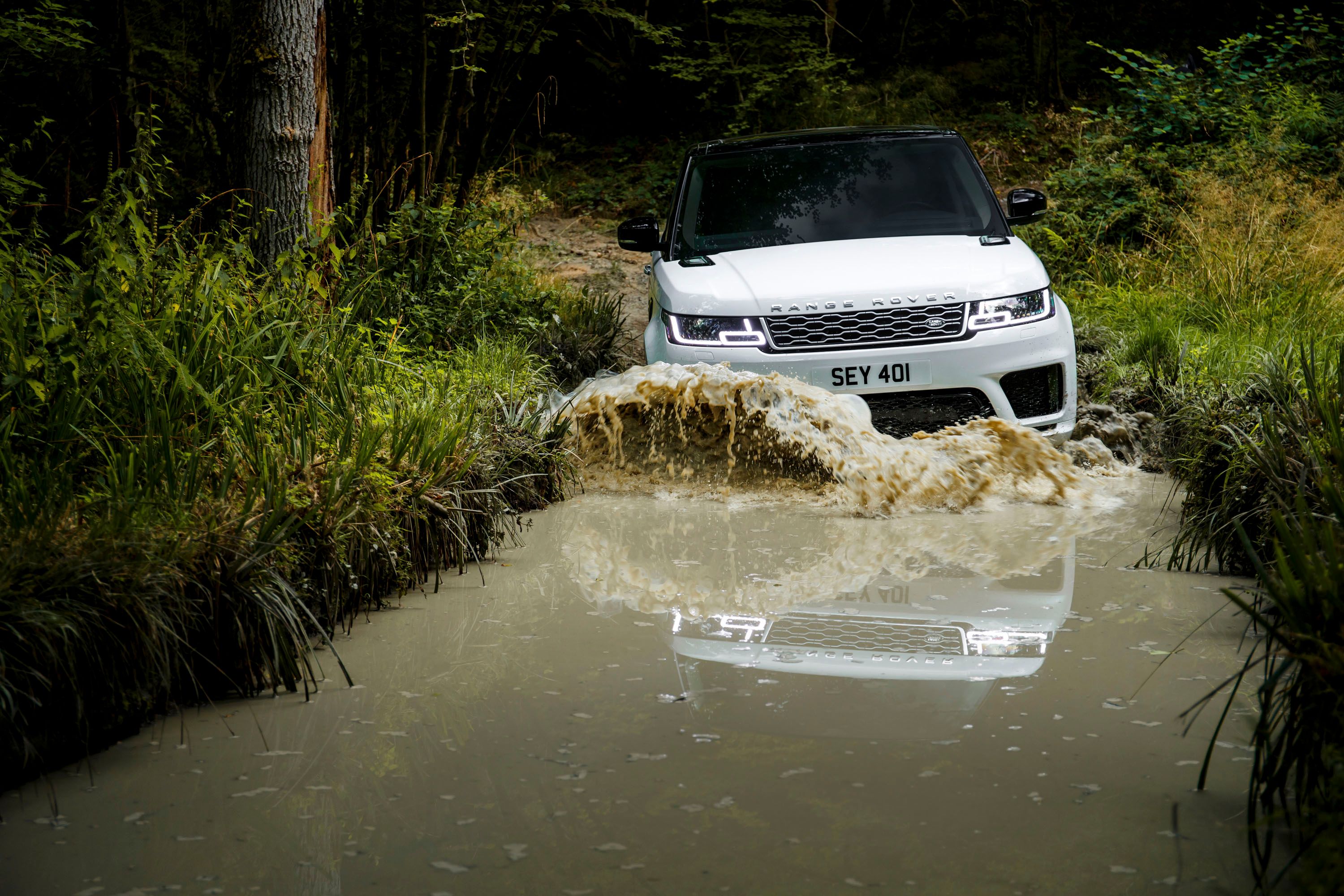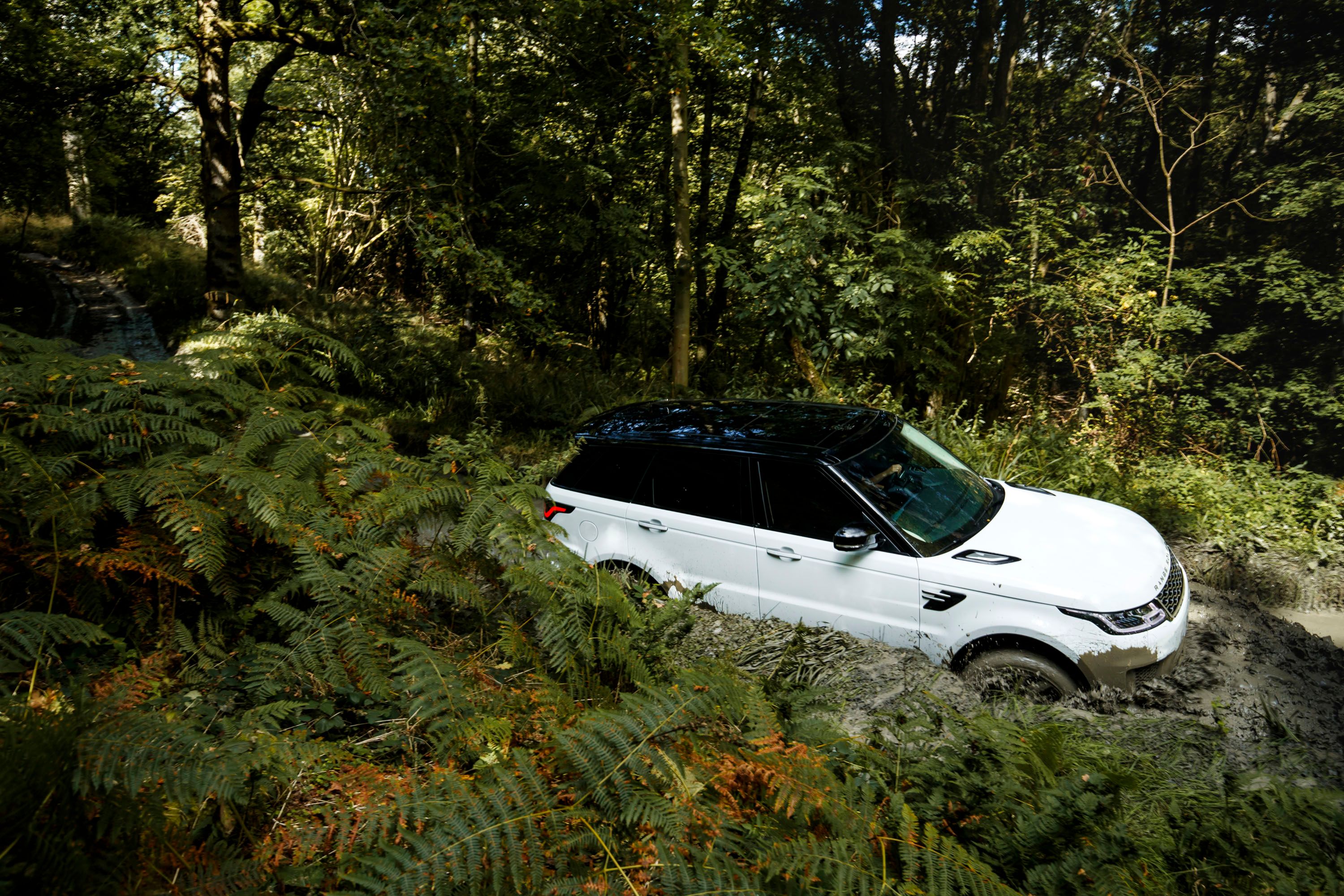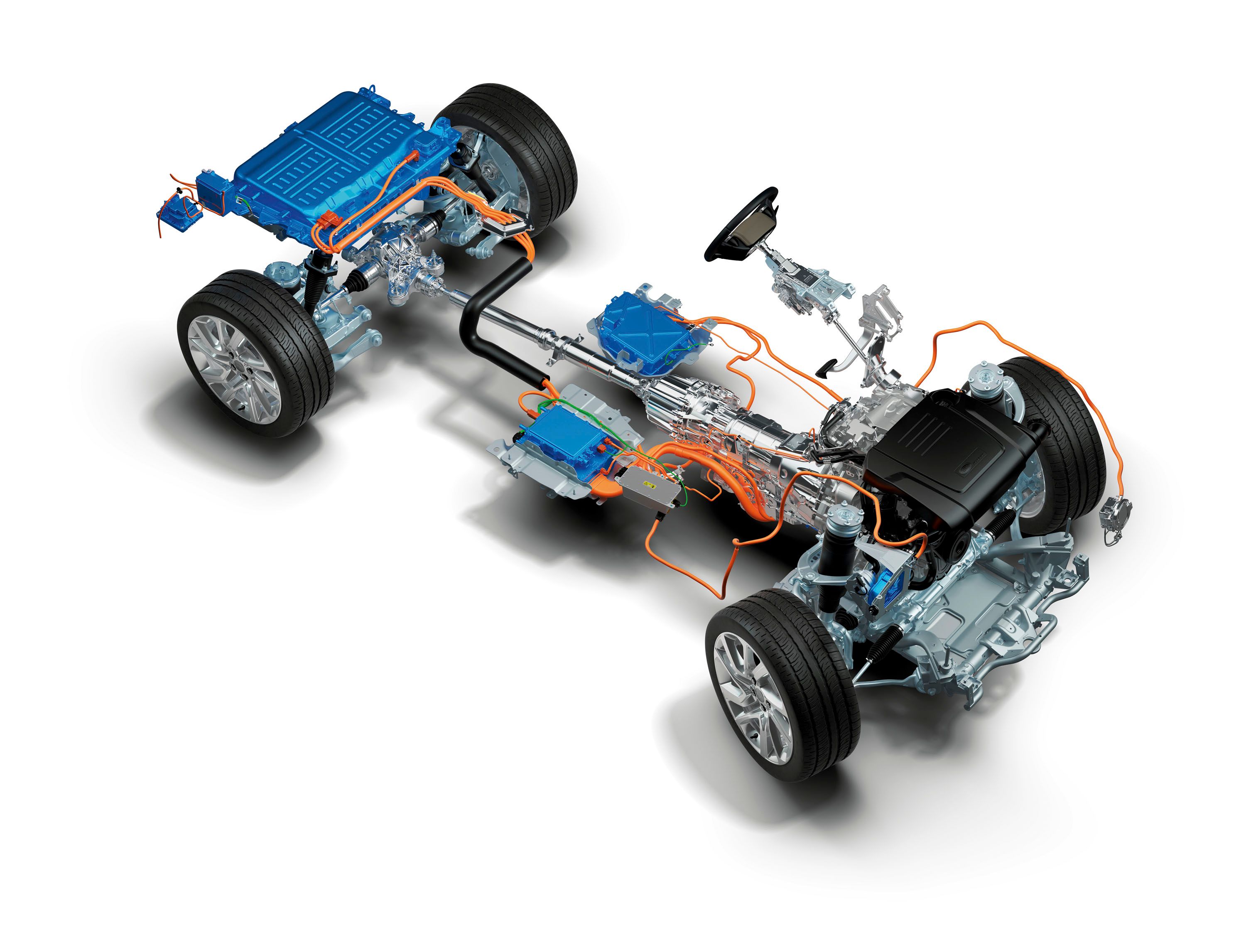The Range Rover Sport is getting a facelift and thorough update for the 2019 model year, along with an all-new gasoline-electric hybrid variant called the P400e. In addition to the new exterior and swanky updated, technology-laden interior, the 2019 Range Rover Sport P400e will offer 31 miles of all-electric driving from its 13.1-kWh lithium-ion battery paired with a 2.0-liter gasoline four-cylinder. But this isn’t some slowpoke Prius. Rather, the P400e packs 404 combined horsepower and 472 pound-feet of combined torque to shoot this all-aluminum SUV to 60 mph in just 6.7 seconds with a top speed of 137 mph while also being able to squeeze out 101 MPGe on the European scale when driving conservatively.
The 2019 Range Rover Sport P400e is part of Jaguar Land Rover’s recent promise to have an electrified variant of each of its vehicles by 2020. The P400e joins the all-electric Jaguar I-Pace crossover as the second member of JLR’s new-age lineup. Obviously, we can expect many more JLR vehicles coming with similar hybrid powertrains in the near future, especially since 2020 is only two model years away. While we have no insider information on the subject, it would be a safe bet JLR will use hybrid systems very similar to the P400e’s in the majority of its vehicles. The range will include everything from the sporty Jaguar F-Type to the luxury-minded Range Rover. Until then, let’s take a look at the 2019 Range Rover Sport P400e, its hybrid drivetrain, and its updated aesthetics and technology.
Continue reading for more information.
2019 Land Rover Range Rover Sport P400e
- Make: Array
- Model: 2019 Land Rover Range Rover Sport P400e
- Engine/Motor: inline-4
- Horsepower: 404
- Torque: 472
- [do not use] Vehicle Model: Array
Exterior
The Range Rover Sport’s new face is more aggressive than ever. The previous design featured much more surface area on the bumper with a relatively tiny lower air inlet. Now, even the non-SRV Range Rover Sports have a huge, three-part lower grille. The design doesn’t impact the SUV’s ability to clear off-road obstacles, however, especially when combined with its adjustable air suspension. The lower chin still retains that skid-plate look that’s designed not to catch on things. The upper grille and leading edge of the hood, however, look almost unchanged.
Looks can be deceiving, though.
The P400e’s grille hides this plug-in hybrid’s charge port. It’s hidden under the Land Rover badge near the headlight. And speaking of headlights, those are new, too. In fact, they incorporate a new technology Land Rover calls “intelligent Matrix Pixel LED headlights.” While the tech is new for Land Rover, we’ve seen other automakers use this in Europe for a few years now. Basically, the headlights are super bright, but avoid “dazzling” oncoming cars by blocking the light aimed in the moving car’s direction. Pretty neat. Sadly, unless legislation changes here in the U.S., we won’t get them. (Call your representatives, folks!)
Things out back are new, too. The 2019 Range Rover Sport has an updated rear fascia that, like the front, is far more sporty and aggressive. Integrated rectangular exhaust tips and an accent piece help differential the 2019 model from its predecessors.
Beyond those changes and some updated wheel deigns, the 2019 Range Rover Sport P400e carries the same basic design as the 2014 Range Rover Sport. That’s not a bad thing, though, as the SUV’s untouched parts still look fresh.
Interior
The 2019 Range Rover Sport, including the P400e model, has an updated interior with vastly updated in-dash technology that’s modeled after the 2018 Range Rover Velar. The most noticeable change is the HVAC controls on the center stack. Like the Velar, these controls are touch-sensitive and feature intuitive airflow controls. JLR calls the system Touch Pro Duo. The dual-zone temperature settings are adjusted by the rotary knobs. What’s more, these controls also double as the Terrain Response 2 system, with the HVAC layout changing to the 4WD settings and the knobs change to operate the different drive modes.
The other big changes include a new, larger main infotainment screen. It’s now a 10-inch touchscreen and runs the latest software from JLR. A second 10-inch screen replaces the analog gauges with a full complement of digital gauge and vehicle parameters. The driver can also configure the display to his liking.
The rest of the interior is updated with new leather upholstery with intricate stitching and piping. There are now 12 power ports for charging a variety of personal electronics. Two of those pugs are household plugs for charging larger devices like laptops. These plugs change depending on the market. And like other JLR products, the new Range Rover Sport comes with JLR’s Activity Key. This wristband is fully waterproof and allows the wearer to leave the traditional keyfob behind. It means no more lost keys or waterlogged keys after getting wet.
Last but not least is an interesting new feature that allows gesture controls to operate the sunblind over the panoramic moonroof. Simply motion backwards with a hand near the rearview mirror to open the shade and motion forward to close it.
Drivetrain
Of course, the big news with the 2019 Range Rover Sport P400e is its gasoline-electric hybrid powertrain. At the heart of the system is an all-aluminum 2.0-liter four-cylinder from JLR’s Ingenium engine family. The engine is mounted longitudinally within the engine bay and is connected to an eight-speed automatic transmission. Integrated into the transmission are the new 85-kW electric motor and a 7-kW on-board charger for the main 13.1-kWh lithium-ion battery pack, which takes the place of the spare tire under the cargo area floor.
Total system output is rated at 404 horsepower and 472 pound-feet of torque. That’s combined from the 300-horsepower 2.0-liter and the 116-horsepower electric motor. As mentioned, the P400e isn’t slow. It will hit 60 mph in 6.3 seconds and onto a top speed of 137 mph.
The Range Rover Sport P400e offers an impressive 31-mile range of all-electric driving in optimal conditions. That’s rather good considering the Range Rover’s size and relatively small 13.1-kWh battery pack. Of course, the P400e two main drive modes that manage the hybrid powertrain. First is the normal parallel hybrid mode. This has both the engine and electric motor powering the vehicle, with the computers determining when to run the engine and when battery power is sufficient. Top speed on battery power is 85 mph. The second mode is EV. This keeps the engine turned off and runs solely on the battery. This mode is critical for Europe’s urban areas that have recently been deemed EV-only.
Between these two main modes are two other sub-settings that allow the driver to tailor how the powertrain operates. The SAVE function will run exclusively on the gasoline engine in order to preserve the battery’s charge. The second mode, Predictive Energy Optimization, works when a destination is keyed into the GPS system. The navigation uses road data to “intelligently optimize the switch between electric motor and engine use.” In other words, the GPS system suggests to the powertrain when to run the gas engine and when to use batteries based on altitude, hill grade, and other variables.
Charging happens quickly and in a variety of ways. First, the on-board charger uses the gasoline engine to recharge the battery on the go. Of course, the P400e is primarily designed as a plug-in hybrid. It can charge in as little as two hours and 45 minutes on a 32-amp charging system. With a regular household plug emitting 10 amps, the P400e will change in seven hours and 30 minutes.
Despite the P400e’s hybrid powertrain, the Range Rover Sport remains a capable off-roader. It features Land Rover’s full-time 4WD system and a specially calibrated version of Terrain Response 2. The electric motor is especially handy when off-roading thanks to its instant torque from zero rpm.
Price
The ordering books are already open for all versions of the 2018 Range Rover Sport, which includes standard gasoline and diesel variants, and the performance-minded SVR. The P400e will arive later as a 2019 model. Prices start at £61,315, or $81,248 at current exchange rates with the U.S. Three trim levels are available with the P400e. The “base” HSE version starts at £70,800.00 ($93,810), the HSE Dynamic starts at £73,800.00 ($97,792), and the Autobiography Dynamic starts at £84,400.00 (111,830). Naturally, the most expensive version of the Range Rover Sport is the SVR, which starts at £99,680.00, or roughly $132,000.
Competition
Porsche Cayenne S E-Hybrid
Hybrid SUVs aren’t as ironic as they used to be, much like how a Porsche SUV has become commonplace rather than comical. Porsche’s latest big, green, off-roading machine is the Cayenne S E-Hybrid. It’s based on the regular Cayenne platform and for the most part is hard to tell apart. That means this luxury SUV has room for five people and their cargo, can tackle winter weather and mild trails and can blend in with the other high-end metal at the local country club. What sets it apart is its powertrain.
The Cayenne S E-Hybrid uses a 3.0-liter supercharged V-6 mated to an eight-speed automatic transmission and paired with a 10.8-kWh lithium-ion battery and a 95-horsepower electric motor. The total system output is 416 horsepower and 435 pound-feet of torque. That’s enough to get this 5,300-pound monster to 60 mph in just 5.2 seconds. When driving green, the S E-Hybrid has 14 miles of all-electric range and will travel up to 78 mph. Like the Range Rover and most other hybrids, the Cayenne can hold its charge until the driver wants to run solely on the battery. On the U.S.’ EPA testing scale and using U.S. gallons, the 2017 Cayenne S E-Hybrid averages 46 MPGe in combined driving.
Pricing is up there with the Range Rover Sport, too. The 2017 model starts at $79,750. Of course, Porsche will let you spend as much money as you’d like upgrading your Cayenne, so costs can quickly soar past $90,000.
Read our full review on the Porsche Cayenne S E-Hybrid.
Volvo XC90 T8 eAWD Plug-In Hybrid
The Volvo XC90 might not have the brand cache enjoyed by Porsche and Range Rover, but the Swedish automaker is turning out some impeccably brilliant and refined products these days. One of the premiere examples is the XC90 T8 Plug-In Hybrid. While it shared the same aesthetics and interior niceties as other XC90 models, the Plug-In Hybrid trim offers the most horsepower and the best fuel economy. How’s that for a conundrum? And the XC90 boasts seating for seven.
The Volvo uses its 2.0-liter four-cylinder that is both supercharged and turbocharged mated to an eight-speed automatic transmission. Though it’s AWD, the engine and transmission only power the front wheels. The electric motor is what turns those rear tires. This 87-horsepower motor generates 177 pound-feet of torque, that when combined with the gasoline engine’s 313 horsepower and 295 pound-feet of torque, equate to 400 horsepower and 470 pound-feet of torque. That’s respectable. The electric motor is fed by a 9.2-kWh lithium-ion battery mounted within the transmission tunnel where the driveshaft would normally be. Volvo claims an all-electric range of 14 miles and a Level 2 charge time of 2.5 hours. Straight-line performance is excellent, with a 5.0-second sprint to 60 mph. Fuel economy is EPA-estimated at 53 MPGe combined.
The Volvo is hardly cheap, but it’s certainly less expensive than the others. The T8 eAWD Plug-In Hybrid can be had for $64,950 when paired with the “base” Momentum trim. That is an $18,050 jump in price over the XC90 Momentum’s least-expensive powertrain option, the T5 FWD Five Passenger. However, Volvo also offers the T8 powertrain on the sporty R-Design and the luxurious Inscription trims, while making it standard on the range-topping Excellence trim. Prices for those T8 versions start at $68,950; $70,050; and $104,900 respectively.
Read our full review on the Volvo XC90 T8 eAWD Plug-In Hybrid.
Conclusion
The Range Rover Sport’s 2019 updates are a welcomed addition to an already capable and lust-worthy SUV. Not only does it look more aggressive and its interior comes with high-end electronics, the new P400e package adds a dose of futurism to the powertrain. This marks Land Rover’s first hybrid, as well as a good step forward for JLR’s goal of offering a hybrid variant of each of its models.
The P400e isn’t just a great first-step for JLR, though. It’s a solid contender in its segment. With an impressive 31 miles of electric range, 404 horsepower, and a quick-charge time of 2.75 hours – all without sacrificing its off-road capabilities – the P400e should be one of the most desirable yet practical versions of the new Range Rover Sport.
References
Land Rover Range Rover Sport
Read our full review on the 2017 Land Rover Range Rover Sport.
Read more Land Rover news.

